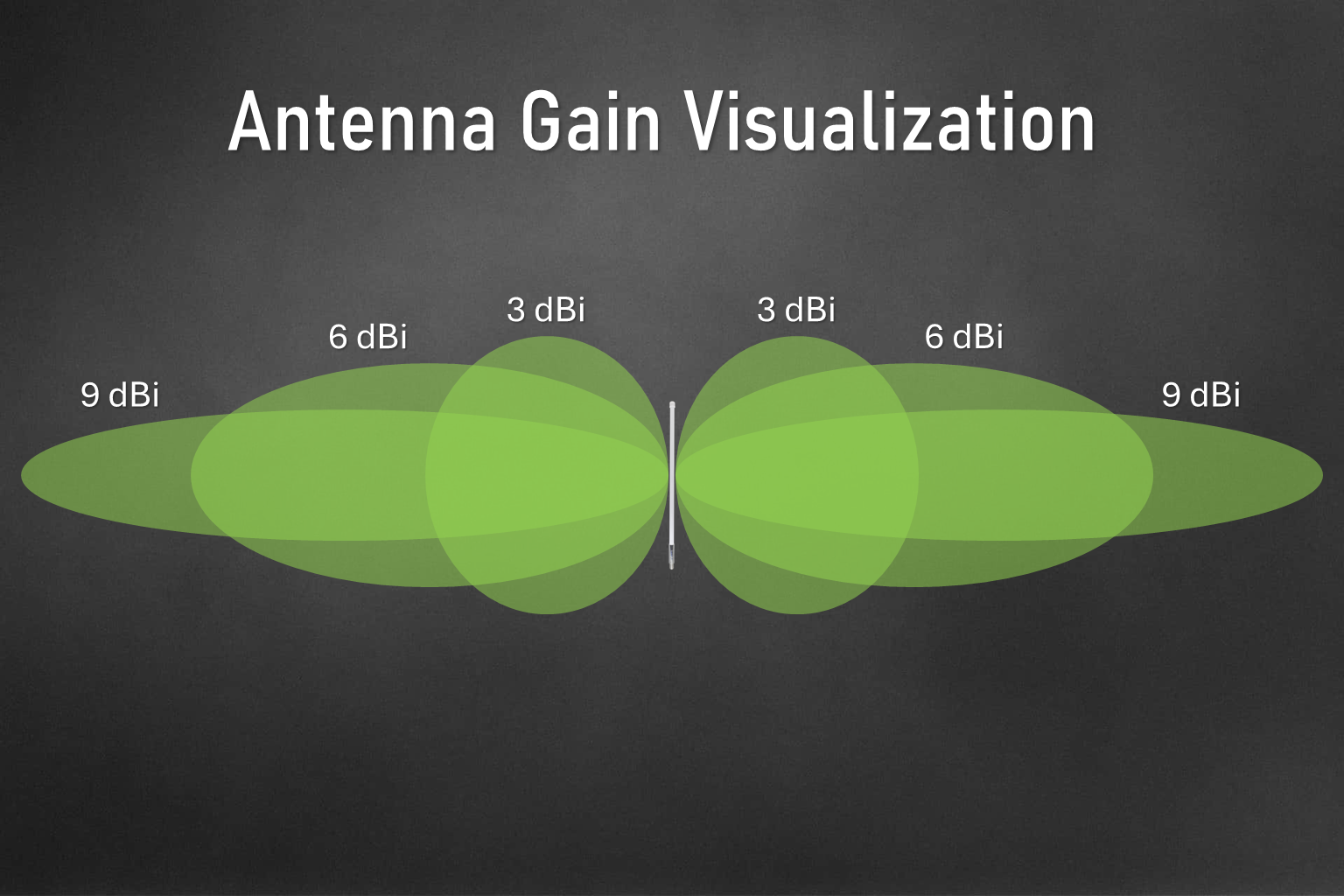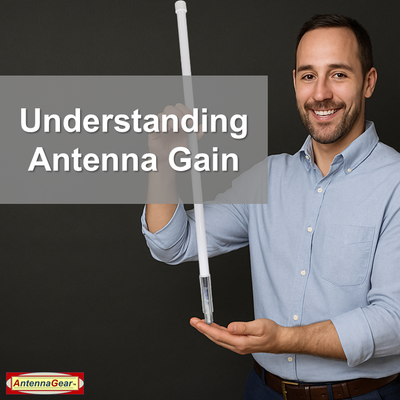Back to the Basics: Understanding Antenna Gain
Posted by Gordon Reed on 4th Nov 2025
Antenna gain is one of the most fundamental and misunderstood concepts in wireless communication. Whether you’re optimizing a mobile hotspot, configuring a cellular router, or designing an IoT network, understanding gain is essential for achieving strong, reliable signal performance. This “Back to the Basics” entry from AntennaGear breaks down what antenna gain really means, how it’s measured, and how to choose the right gain for your application.
What is Antenna Gain?
Antenna gain is a measure of how efficiently an antenna converts electrical power into radio energy in a specific direction. It doesn’t amplify power like an amplifier does; instead, it redistributes energy, focusing it where it’s needed most.
Gain is expressed in decibels relative to an isotropic radiator (dBi) or sometimes decibels relative to a dipole (dBd). The isotropic radiator is a theoretical antenna that radiates equally in all directions and serves as a perfect reference point.
In simple terms, a higher gain means the antenna radiates more power in a given direction, improving signal strength and range, but often at the expense of coverage angle.

The Science Behind Gain
To visualize gain, imagine squeezing a balloon. The air inside doesn’t change, but as you compress one side, the other expands, directing more volume in a specific area.
Antenna gain works similarly. By shaping the radiation pattern, an antenna directs more energy along a preferred path, resulting in increased signal intensity.
- Omnidirectional antennas distribute energy evenly in all horizontal directions, ideal for 360° coverage.
- Directional antennas concentrate energy into a focused beam, extending range and link quality for point-to-point or fixed applications.
However, higher gain narrows the beamwidth, reducing vertical or lateral coverage. Balancing gain and pattern shape is key to ensuring the antenna performs effectively for your environment.
Gain in Real-World Applications
Different applications benefit from different gain levels:
- Mobile and Vehicular Use: Moderate gain (2–5 dBi) maintains balanced coverage as vehicles move between cell sectors.
- Fixed Installations: Higher gain (8–12 dBi or more) directional antennas are used for fixed-point links, bridging buildings or connecting rural sites.
- IoT and M2M Devices: Low-to-medium gain antennas optimize energy use while maintaining dependable connectivity in dense or obstructed areas.
Factors such as terrain, mounting height, surrounding materials, and antenna polarization all influence real-world performance beyond the rated gain value.
Reading the Specifications
Antenna gain values listed on datasheets represent the antenna’s performance under ideal lab conditions. Interpreting those numbers correctly requires context:
- Form Factor Matters: Larger directional antennas (panel or Yagi) naturally produce higher gain than compact puck or whip styles.
- Frequency Dependence: Gain is frequency-specific; a 5 dBi rating at 700 MHz may differ at 2.4 GHz.
- Pattern Type: The shape of the radiation pattern determines how the gain translates into usable coverage.
When comparing products, ensure gain values are measured consistently and that the test parameters (impedance, VSWR, and polarization) are disclosed.
Common Misconceptions
A common belief is that higher gain always equals better performance. In reality, this isn’t always true.
- Higher gain can reduce coverage angle. A 9 dBi antenna may reach farther but leave dead zones nearby.
- Gain doesn’t equal transmit power. Effective radiated power (EIRP) includes both the transmitter’s power output and the antenna’s gain.
- Regulatory limits apply. Many regions restrict maximum EIRP, meaning excessive gain could actually degrade performance if it forces power reduction to stay compliant.
Measuring Antenna Gain
Manufacturers use controlled environments, such as anechoic chambers, to measure gain. Reference antennas are used to compare the test antenna’s performance against a known standard.
Realized gain accounts for both radiation efficiency and mismatch losses, providing a more accurate representation of performance in real-world conditions. The best manufacturers test across multiple frequencies and polarizations to ensure consistent performance across bands.
Choosing the Right Gain for Your Application
Selecting the right antenna gain depends on your deployment environment and connectivity goals:
- Indoor coverage: Low-gain antennas with broad radiation patterns provide even signal distribution.
- Outdoor mobility: Moderate-gain antennas balance reach and stability.
- Long-distance links: High-gain directional antennas deliver focused energy where you need it most.
AntennaGear offers antennas across this spectrum, from compact omnidirectional pucks to high-gain directional panels, allowing users to optimize performance for any device or deployment.
What This Means for You
Antenna gain isn’t about raw power, it’s about precision. By understanding how gain affects coverage and range, you can select antennas that deliver dependable connectivity under real-world conditions.
At AntennaGear, every antenna is tested and specified with practical deployment in mind, ensuring your LTE, 5G, and Wi-Fi devices operate at peak efficiency wherever they’re deployed.
Visit AntennaGear.net to explore antennas engineered for performance, compatibility, and reliability.

